
Of wolf and man, and other rewilding success stories
Rewilding initiatives across the world are demonstrating what can be achieved by letting nature take the lead.
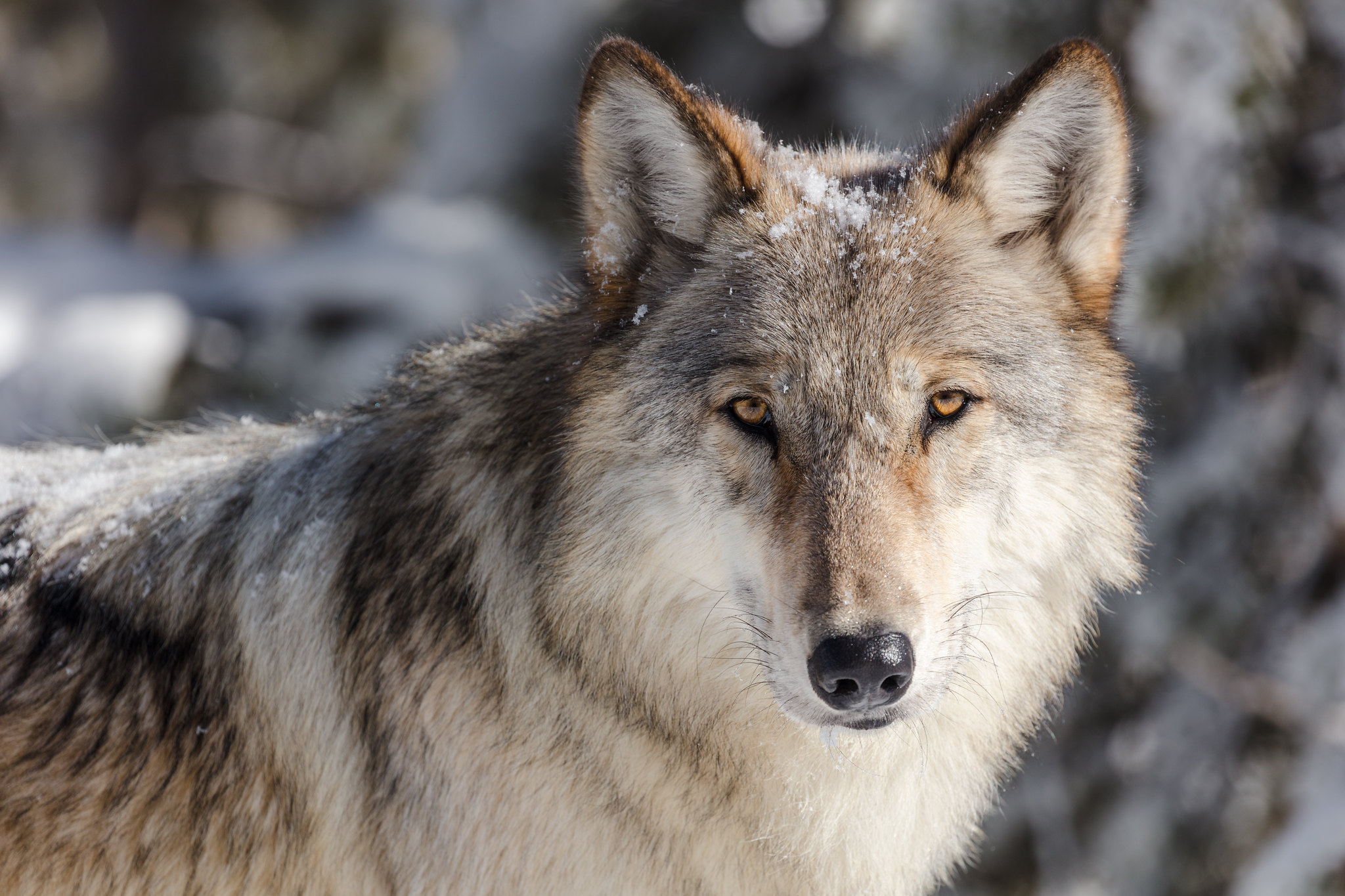
Across diverse landscapes all over the world, a growing number of experiments in “rewilding” are demonstrating what can be achieved through an approach to conservation that seeks to minimize human intervention and instead allow nature itself to take the lead.
The term ‘rewilding’ has become something of a buzzword over the last few years, but many of the practices associated with the term have been around in various forms for decades – long enough for us to begin to see the effects of these kinds of initiatives and the remarkable successes they have often achieved.
The following are six among many such successes.
Wolves in Yellowstone
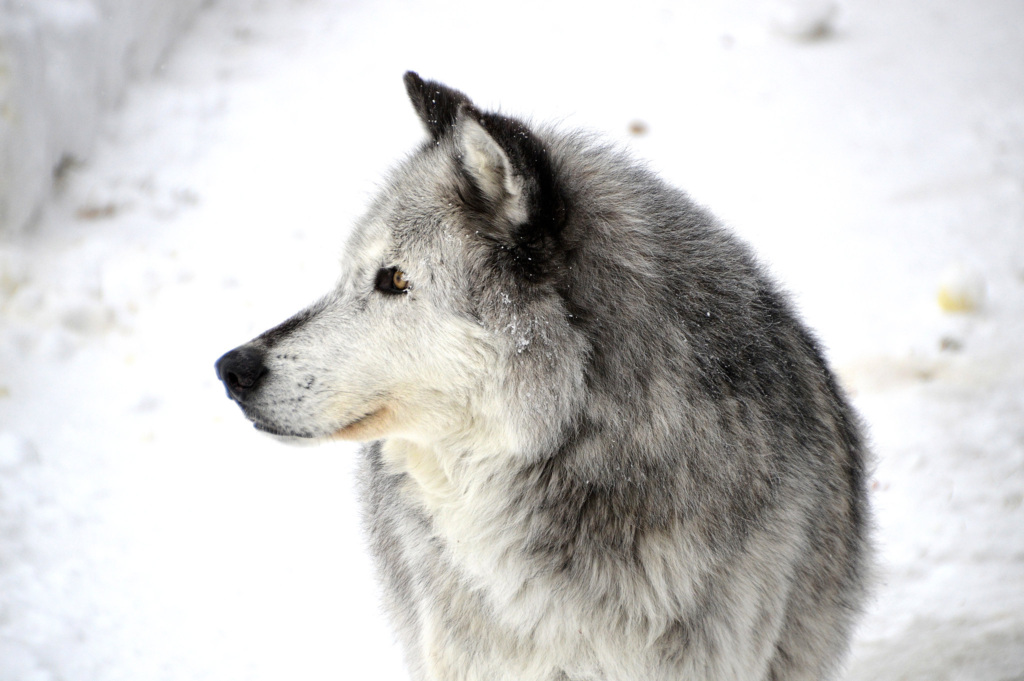
The reintroduction of wolves to Yellowstone National Park has helped boost biodiversity and rebalance a degraded ecosystem.Photo by Mike van Dalen | CC-BY-2.0
Probably best known of all the United States’ rewilding initiatives is the much publicized reintroduction of wolves to Yellowstone National Park in the 1990s.
Yellowstone’s once abundant wolf population had been all but wiped out by the mid-1920s, to the detriment of the overall health of the park’s ecosystem. Without wolves to keep their numbers down, deer and elk populations exploded, leading to overgrazing and depletion of the vegetation of the valley floors. This led, among other things, to the disappearance of beavers and consequently to the loss of wetlands and the species they support.
The reintroduction of wolves gradually brought the ecosystem back into balance, reducing the population of large herbivores, which allowed vegetation to recover and thus enabled beavers and other species to return, including the myriad species that rely on wetland habitats. The wolves’ return also brought down coyote populations, which allowed for the reemergence of prey species like rabbits and mice that provided sustenance for foxes, weasels and other predators. The end result: a region once again rich in biodiversity and the return of a healthy, balanced ecosystem.
Wildebeest in the Serengeti
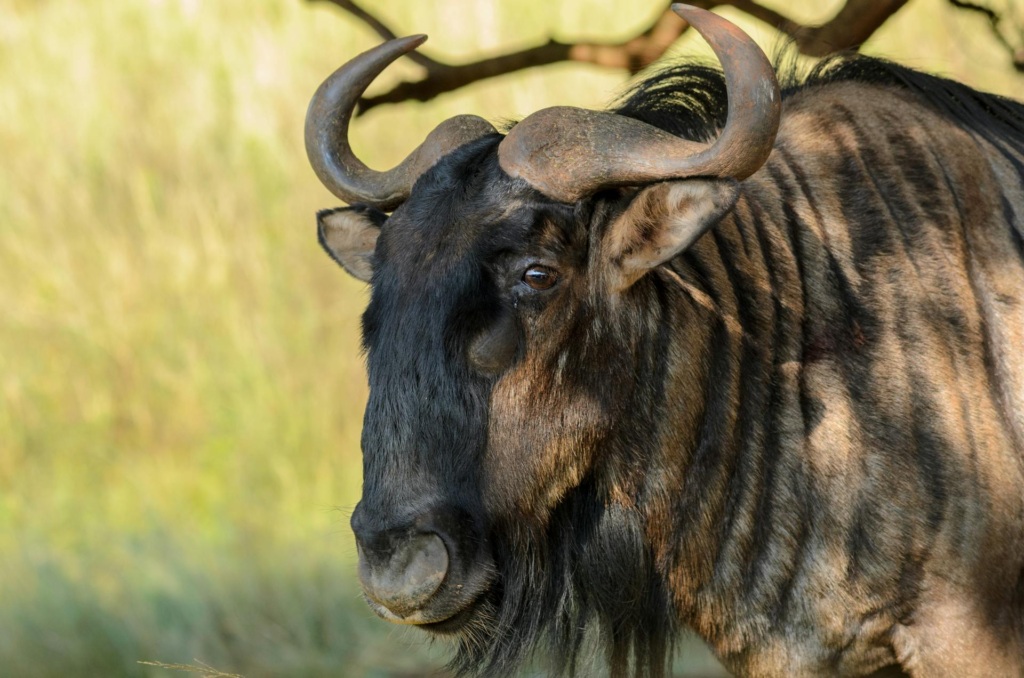
Restoration of the Serengeti’s blue wildebeest population has transformed the region from a net emitter of greenhouse gases into a bastion of carbon sequestration.Photo by Steward Masweneng | Public Domain
Often held up as one of the greatest conservation success stories of recent times, the restoration of the blue wildebeest population in the Serengeti has helped to revive and rebalance a degraded ecosystem. It has also become a key example of how rewilding can help combat climate change, transforming the region from a net emitter of greenhouse gases into a major carbon sink.
Blue wildebeest, thought to have once numbered well over a million in the Serengeti, are vital to maintaining biodiversity and a functioning local ecosystem. On their travels across the landscape, they graze on grasses and then move on, preventing any single area from being overgrazed. Their droppings enrich the soil with essential nutrients and support plant growth and the overall health of the grasslands, benefiting a wide range of other organisms, from insects to small mammals and birds. Crucially, by keeping the vegetation in check, they also play an important role in preventing wildfires.
By the mid-20th century, viruses from livestock, as well as poaching and habitat loss, had reduced the Serengeti’s wildebeest population to just 300,000, leading to the unchecked growth of vegetation and in turn to more frequent wildfires, which devastated much of the region’s ecosystem every year and released vast amounts of CO2 into the atmosphere. As a result, the Serengeti ultimately went from being a major contributor to carbon sequestration to a net producer of greenhouse gases.
Measures to control diseases among cattle – notably, mass vaccinations against the deadly rinderpest virus, a major contributor to the depletion of the wildebeest population, having spilled over from farmed animals – have enabled the Serengeti’s wildebeest to recover to their historic levels of over 1.5 million, bringing the landscape back into balance and enabling the Serengeti to become a natural storage unit for carbon once again. Thanks to the wildebeest, the Serengeti now captures an additional 8 million tons of carbon every year – the equivalent of the annual CO2 emissions from Kenya and Tanzania combined. And by one estimate, for every 100,000 wildebeest introduced, the amount of carbon stored in the Serengeti rises by 15%.
The Scottish Beaver Trial

A beaver telling another beaver an amusing anecdote.Photo by Deborah Freeman | CC-BY-SA-2.0
The beaver has been a major focus of rewilding efforts in many countries, with a growing number of initiatives seeking to reintroduce these charismatic rodents to places where their populations have been depleted or wiped out (as is the case in many parts of Europe, for example). One such effort is the rewilding initiative at Knapdale Forest in Scotland, where, between May 2009 and June 2010, 16 beavers were released into the wild as part of the Scottish Beaver Trial.
Knapdale Forest has since become a living example of how the reintroduction of beavers can transform landscapes and benefit ecosystems. Over the years, these creatures – not for nothing known as “ecosystem engineers” – have created a network of dams, ponds and wetlands that provide habitat for a range of species, including amphibians, waterfowl and insects, as well as helping to regulate water flow, reducing the risk of downstream flooding.
The success of the trial ultimately led the Scottish government to make the landmark decision to allow beavers to remain, and to work towards securing European Protected Species status for the species in Scotland. That status was conferred in 2019, when the Eurasian Beaver was added to the list of European Protected Species of Animals, protected under Scottish law.
Wild Ennerdale, England
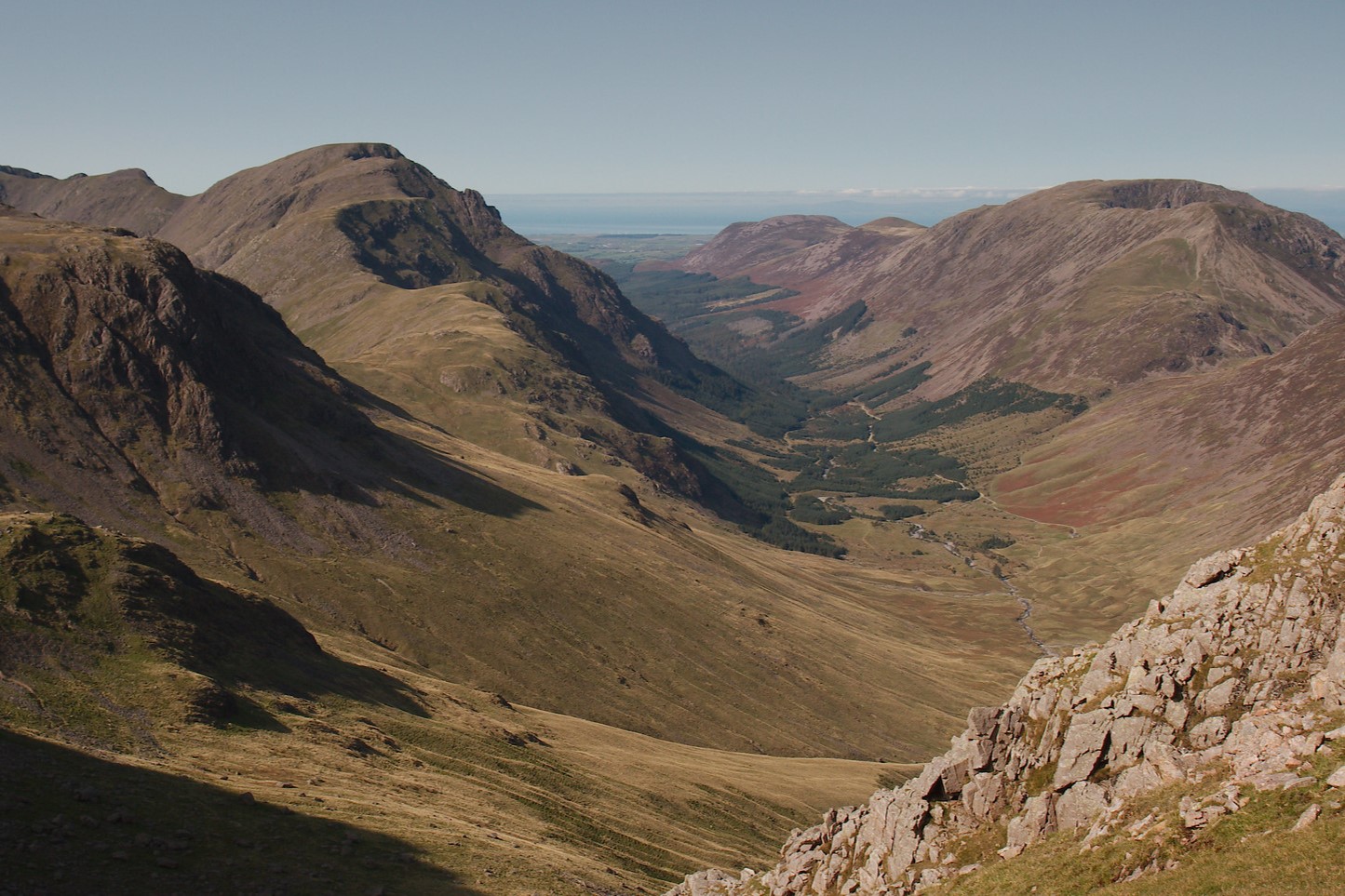
Rewilding efforts in Ennerdale have led to a spectacular return of wildlife to this remote corner of northern England.Photo by Paul Albertella | CC-BY-2.0
While many rewilding efforts across the globe have centered on the reintroduction of individual species – wolves, wildebeest, bison, beavers and myriad other keystone species – other efforts have been more expansive in scope.
One such initiative is the case of Ennerdale in the English Lake District. In the early 2000s, the area’s main landowners – a collection of public, private and nonprofit entities – decided to move away from traditional land management practices and instead “let natural processes shape the landscape and ecology… leading towards a wilder, more diverse and resilient place.”
Since then, the Wild Ennerdale Project has scaled back the intensive sheep grazing that had degraded the landscape’s biodiversity and wildlife habitats to allow for the introduction of larger herbivores, such as the Galloway cattle that now roam the dale, distributing seeds and breaking up the ground to open up space for diverse plant life to thrive. Commercial timber plantations have been replaced or interspersed with native trees and the artificial infrastructure impeding the river that flows through the dale has been removed, enabling the return of natural wetlands and the creatures they support.
These efforts have led to a spectacular return of wildlife. Increasingly diverse habitats and expanding woodland have enabled a sharp rise in the number of bird species, including the return of the long-absent green woodpecker. The marsh fritillary butterfly, previously extinct in this part of the U.K., is back, as is the bilberry bumblebee. Wild juniper now flourishes throughout the dale, and the river has become an important spawning site for the once near-extinct Arctic charr, whose population has exploded, as well as other aquatic species, including critically endangered freshwater mussels.
Knepp Estate, England
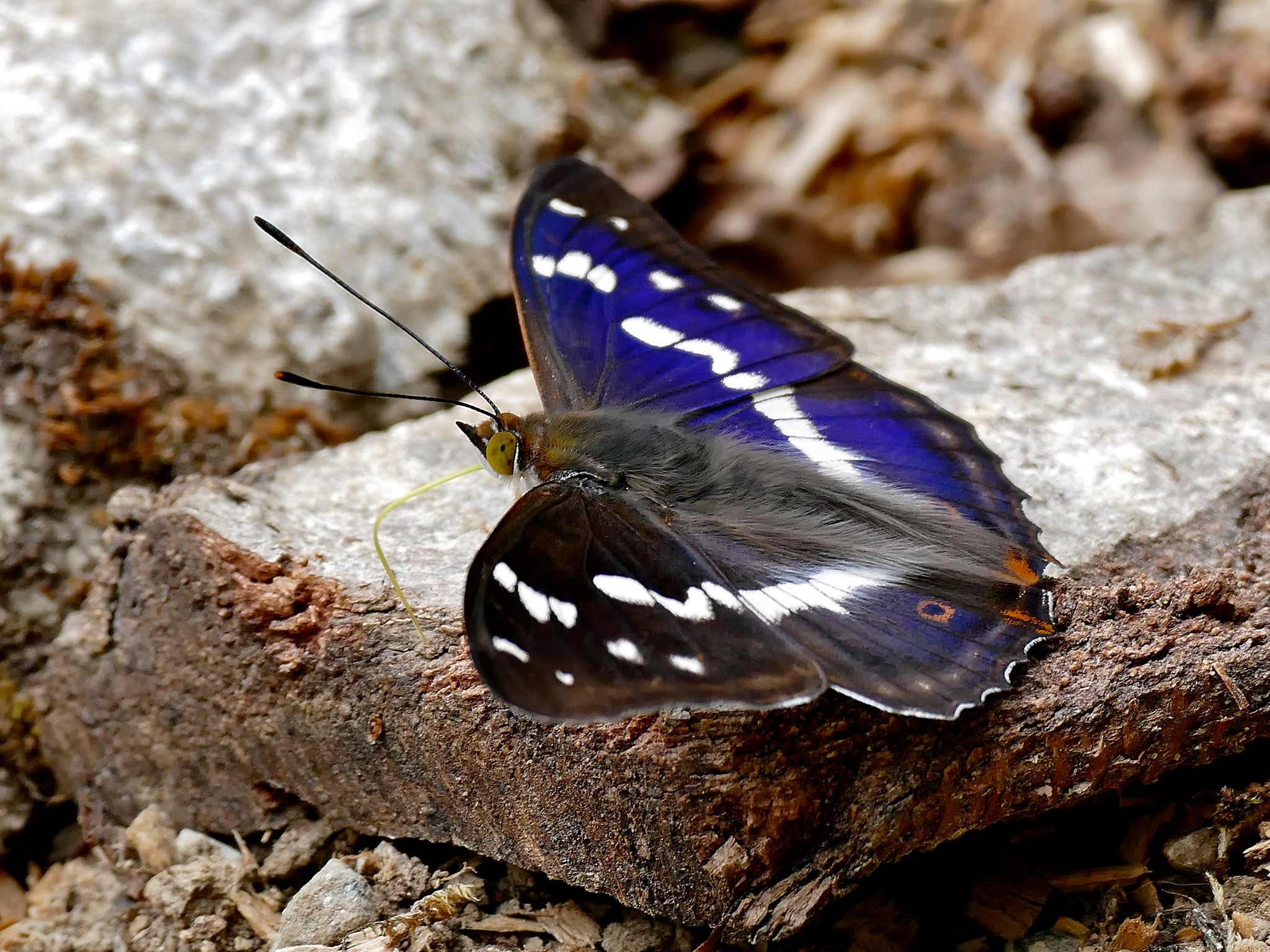
The rare Purple Emperor butterfly is one of the many species that have found a home in the rewilded grounds of Knepp Castle, England.Photo by Bernard Dupont | CC-BY-SA-2.0
In the early 2000s, the owners of Knepp Castle in West Sussex made the decision to transform 3,500 acres of farmland in the castle grounds into a wildland area. Grazing animals, including Exmoor ponies, Tamworth pigs and longhorn cattle, were introduced and the land was left alone to regenerate naturally. Flora and fauna have returned in abundance, including rare species like turtle doves, barbastelle bats, nightingales, and the purple emperor butterfly, for which the wild foliage has become an important breeding ground. In August 2023, two wild beavers brought in from Scotland welcomed their first offspring: the first beavers to be born in the wild in this part of England in 500 years.
The Wild, Wild West: Bison on the Plains
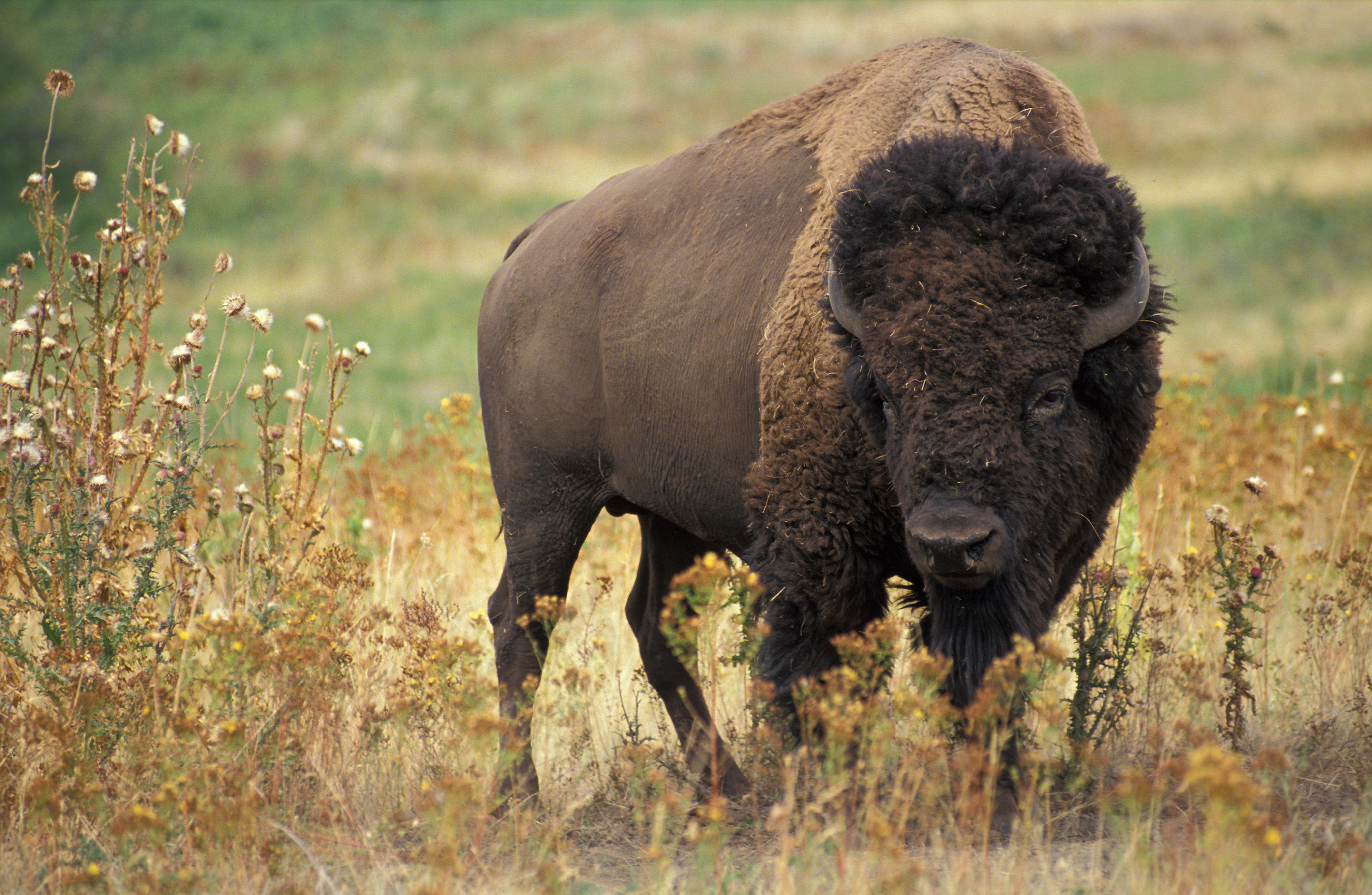
A Plains bison.Photo by Jack Dykinga, United States Department of Agriculture | Public Domain
Like the wildebeest of the Serengeti, the 60 million or more bison that once roamed the American prairie were critical to the health of the region’s landscape and ecosystems. Before being hunted almost to extinction in the 19th century, these nomadic creatures were instrumental in creating a dynamic and diverse landscape, controlling the growth of grasses and other vegetation and enabling the spread of a diverse mix of plant species by unwittingly carrying seeds in their fur and hooves and disturbing the soil to create space for these seeds to germinate, in turn benefiting other wildlife and fostering a healthier ecosystem. Through their “wallowing” behavior, bison create depressions in the ground that collect rainwater, enhancing soil fertility and creating small microhabitats for various plants and animals.
Bison now exist in such small numbers compared to their historic population levels that the species is considered “ecologically extinct,” but efforts have been underway for some years to change this.
As well as establishing protected areas for these animals to roam, partnerships between government agencies, conservation organizations, Native American tribes and private landowners have worked to acquire bison from herds elsewhere in the country and transfer them to suitable reintroduction sites to bolster wild herds and ensure the long-term health and resilience of wild bison populations.
Efforts to reestablish bison herds in their historic ranges were taking place as far back as the 1960s, with the reintroduction of 50 bison to Badlands National Park from Theodore Roosevelt National Park. The Badlands herd now numbers somewhere between 809 and 1,200 animals and serves as a “source herd” for creating bison herds elsewhere across the country. Currently around 60 such herds have successfully been established in the U.S. and Canada, with an estimated total of around 21,000 bison. While it will still be some years before their ecological impact is fully realized, large-scale efforts to identify further opportunities and create places where wild bison can thrive in large herds on the vast landscapes in the northern Great Plains remain underway.
* * *
Rewilding is not without its challenges. But as these examples show, under the right circumstances, in the right places, and with the right planning, it is possible to achieve major conservation gains simply by stepping back and letting nature do its thing.
Topics
Authors
James Horrox
Policy Analyst, Frontier Group
James Horrox is a policy analyst at Frontier Group, based in Los Angeles. He holds a BA and PhD in politics and has taught at Manchester University, the University of Salford and the Open University in his native UK. He has worked as a freelance academic editor for more than a decade, and before joining Frontier Group in 2019 he spent two years as a prospect researcher in the Public Interest Network's LA office. His writing has been published in various media outlets, books, journals and reference works.
Steve Blackledge
Senior Director, Conservation America Campaign, Environment America
Steve directs Environment America’s efforts to protect our public lands and waters and the species that depend on them. He led our successful campaign to win full and permanent funding for our nation’s best conservation and recreation program, the Land and Water Conservation Fund. He previously oversaw U.S. PIRG’s public health campaigns. Steve lives in Sacramento, California, with his family, where he enjoys biking and exploring Northern California.
Find Out More

How much land will a renewable energy system use?
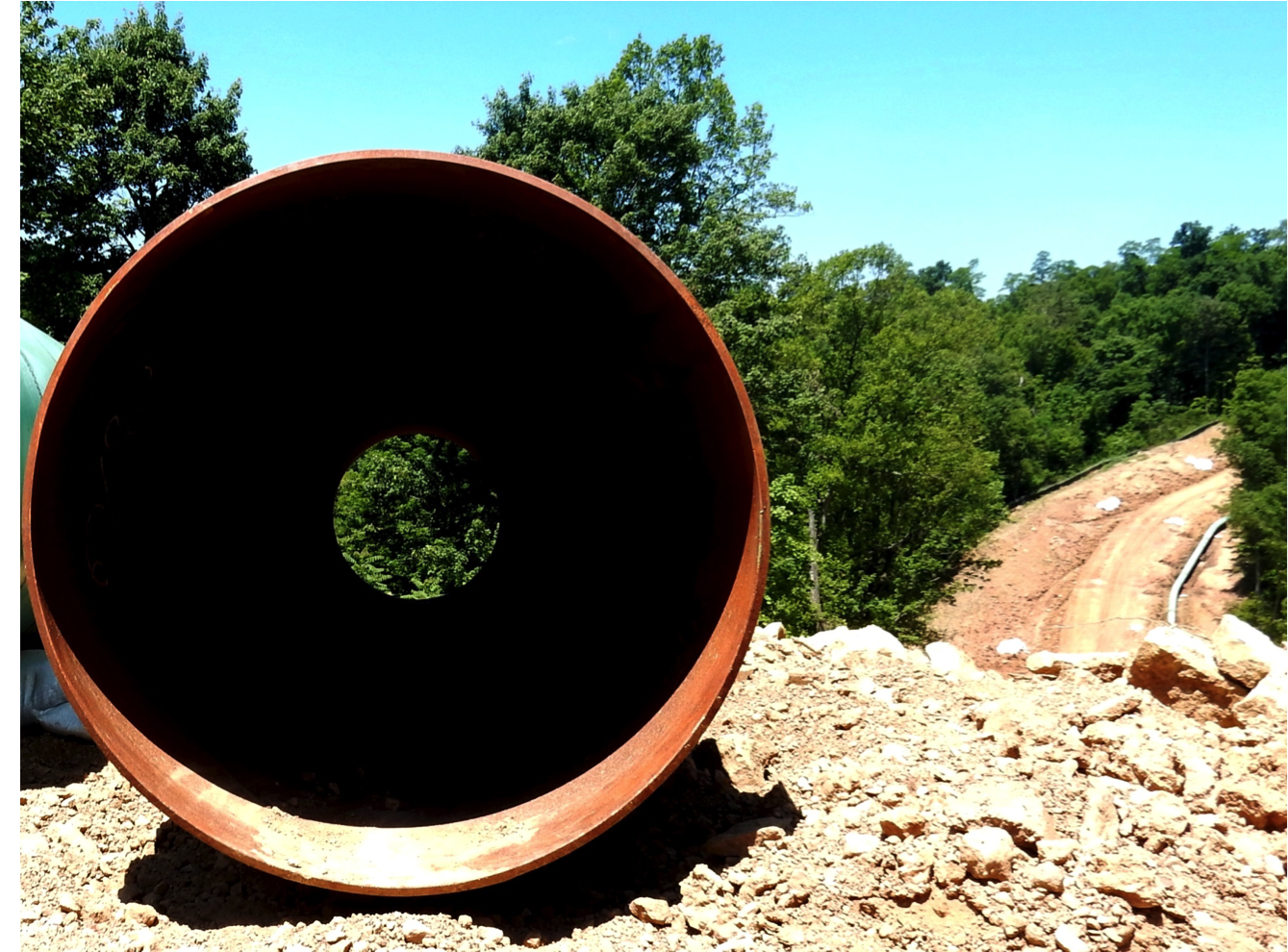
Fossil fuels outnumber clean energy projects in NEPA environmental review

Land Not Needed: Why we should go big on rooftop solar


